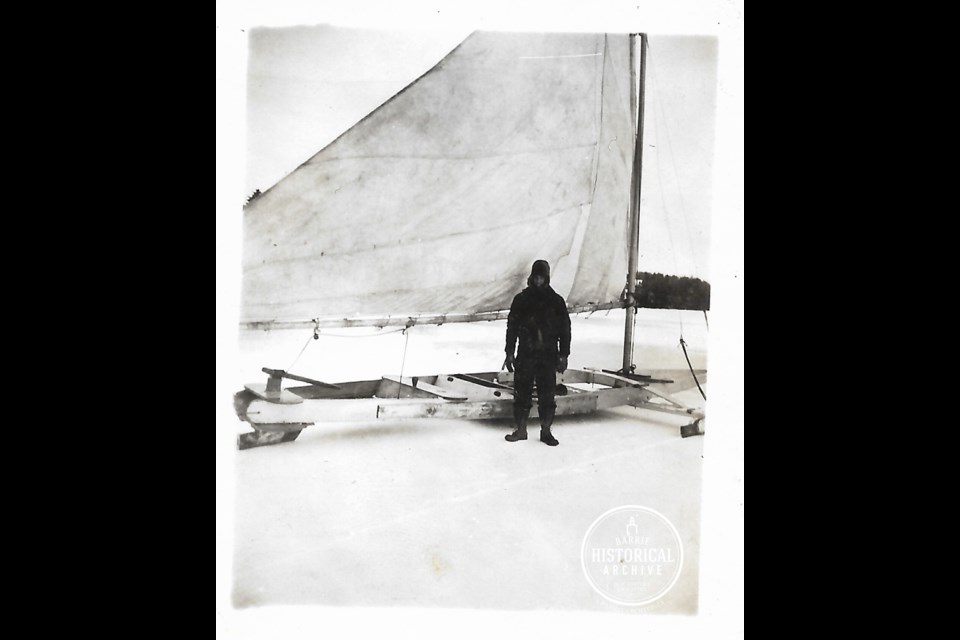This ongoing series from Barrie Historical Archive curator Deb Exel shows old photos from the collection and one from the present day, as well as the story behind them.
In spite of all the hardships, folks back in the day still managed to find the fun in winter. Sleigh parties to Little Lake, moonlight skating on the bay and winter festivals were all pleasurable activities during the long, cold season.
Another popular winter pastime was … ice sailing.
Iceboating, or sailing, is said to have originated in Europe, with its earliest appearance in Toronto about 1824. While likely commercial in their earliest use, these boats with iron blades on their hulls quickly evolved to a popular winter amusement. Iceboating for recreation and racing became part of Ontario winter culture by the 1870s.
The 19th-century sport iceboats could be described as a box, sitting on cross-pieces and supported by runners. They were usually rigged like a sloop with a jib sail forward of the mast and were termed "stern-steerers."
Smaller iceboats, referred to as scooters, made their appearance in the early 1900s. With their shallow hull on fixed runners, these iceboats could cross ice or water. Since they had no rudder, they were steered by the sails. In the 1930s, front steering boats began to replace the stern-steerer models.
Many iceboats were homemade, but often blacksmiths were utilized to help with the iron work. Some professional boat builders were also in the ice yacht business as well, either fabricating these crafts or retrofitting them. It’s possible local craftsman, Carley Boat Builders, designed iceboats as well as their line of watercraft, as Ernie Carley was a master on the ice.
Lloyd Smith, grandson of the first sheriff of Simcoe County, Benjamin Walker Smith, and his dog Lobo, could also be found skimming the frozen bay on their iceboat.
The Smiths, Lloyd and Iris, lived at 47 Rodney St., a historic home now designated under the Ontario Heritage Act. Following the Second World War, the Smiths would develop their camping and cabin business on Blake Street, operating the Lake Simcoe Motel for many years.
Ice and wind are criteria for ice sailing … wintry weather.
We have open water on the bay today, but looking back, March 8, 1931 was one of the dates when Barrie received the most snowfall in one day: 33 centimetres (12.9 inches); in mid-March 1901, ice drawing was still underway in preparation for the summer months, and almost 130 years ago on March 7, 1895, reports tell of several young men losing control of their iceboats while out on the bay.
These Smith family photos indicate, there was no shortage of good conditions for ice sailing in the winter of 1941!



